Object Detection
Object detection is a computer vision task in which the goal is to detect and locate objects of interest in an image or video. The task involves identifying the position and boundaries of objects in an image, and classifying the objects into different categories. It forms a crucial part of vision recognition, alongside image classification and retrieval.
Papers and Code
Efficient Detection of Objects Near a Robot Manipulator via Miniature Time-of-Flight Sensors
Sep 19, 2025
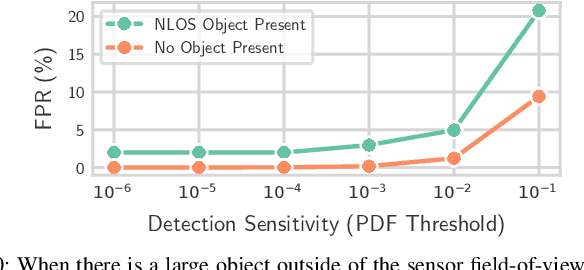
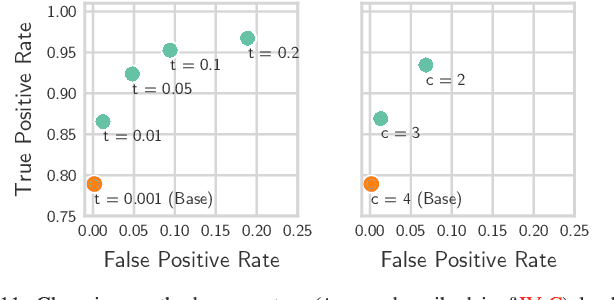

We provide a method for detecting and localizing objects near a robot arm using arm-mounted miniature time-of-flight sensors. A key challenge when using arm-mounted sensors is differentiating between the robot itself and external objects in sensor measurements. To address this challenge, we propose a computationally lightweight method which utilizes the raw time-of-flight information captured by many off-the-shelf, low-resolution time-of-flight sensor. We build an empirical model of expected sensor measurements in the presence of the robot alone, and use this model at runtime to detect objects in proximity to the robot. In addition to avoiding robot self-detections in common sensor configurations, the proposed method enables extra flexibility in sensor placement, unlocking configurations which achieve more efficient coverage of a radius around the robot arm. Our method can detect small objects near the arm and localize the position of objects along the length of a robot link to reasonable precision. We evaluate the performance of the method with respect to object type, location, and ambient light level, and identify limiting factors on performance inherent in the measurement principle. The proposed method has potential applications in collision avoidance and in facilitating safe human-robot interaction.
Synthetic-to-Real Object Detection using YOLOv11 and Domain Randomization Strategies
Sep 18, 2025
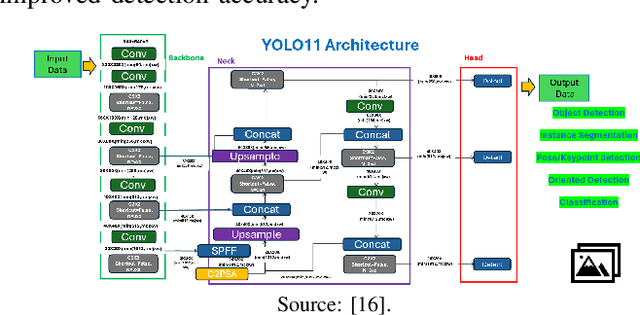
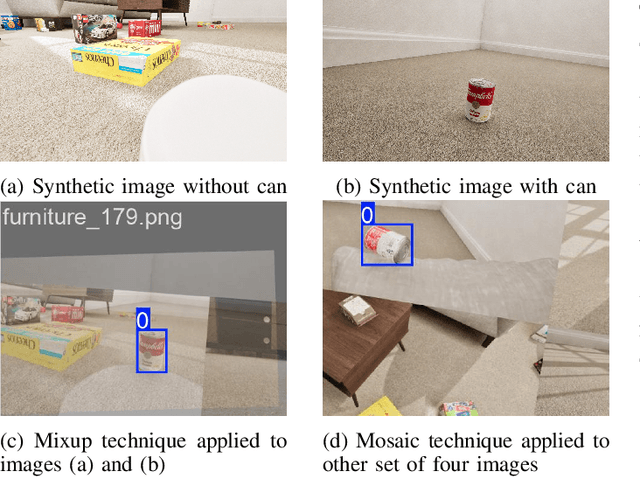

This paper addresses the synthetic-to-real domain gap in object detection, focusing on training a YOLOv11 model to detect a specific object (a soup can) using only synthetic data and domain randomization strategies. The methodology involves extensive experimentation with data augmentation, dataset composition, and model scaling. While synthetic validation metrics were consistently high, they proved to be poor predictors of real-world performance. Consequently, models were also evaluated qualitatively, through visual inspection of predictions, and quantitatively, on a manually labeled real-world test set, to guide development. Final mAP@50 scores were provided by the official Kaggle competition. Key findings indicate that increasing synthetic dataset diversity, specifically by including varied perspectives and complex backgrounds, combined with carefully tuned data augmentation, were crucial in bridging the domain gap. The best performing configuration, a YOLOv11l model trained on an expanded and diverse dataset, achieved a final mAP@50 of 0.910 on the competition's hidden test set. This result demonstrates the potential of a synthetic-only training approach while also highlighting the remaining challenges in fully capturing real-world variability.
MuFFIN: Multifaceted Pronunciation Feedback Model with Interactive Hierarchical Neural Modeling
Oct 06, 2025Computer-assisted pronunciation training (CAPT) manages to facilitate second-language (L2) learners to practice pronunciation skills by offering timely and instructive feedback. To examine pronunciation proficiency from multiple facets, existing methods for CAPT broadly fall into two categories: mispronunciation detection and diagnosis (MDD) as well as automatic pronunciation assessment (APA). The former aims to pinpoint phonetic pronunciation errors and provide diagnostic feedback, while the latter seeks instead to quantify pronunciation proficiency pertaining to various aspects. Despite the natural complementarity between MDD and APA, researchers and practitioners, however, often treat them as independent tasks with disparate modeling paradigms. In light of this, we in this paper first introduce MuFFIN, a Multi-Faceted pronunciation Feedback model with an Interactive hierarchical Neural architecture, to jointly address the tasks of MDD and APA. To better capture the nuanced distinctions between phonemes in the feature space, a novel phoneme-contrastive ordinal regularization mechanism is then put forward to optimize the proposed model to generate more phoneme-discriminative features while factoring in the ordinality of the aspect scores. In addition, to address the intricate data imbalance problem in MDD, we design a simple yet effective training objective, which is specifically tailored to perturb the outputs of a phoneme classifier with the phoneme-specific variations, so as to better render the distribution of predicted phonemes meanwhile considering their mispronunciation characteristics. A series of experiments conducted on the Speechocean762 benchmark dataset demonstrates the efficacy of our method in relation to several cutting-edge baselines, showing state-of-the-art performance on both the APA and MDD tasks.
Sparse Multiview Open-Vocabulary 3D Detection
Sep 19, 2025



The ability to interpret and comprehend a 3D scene is essential for many vision and robotics systems. In numerous applications, this involves 3D object detection, i.e.~identifying the location and dimensions of objects belonging to a specific category, typically represented as bounding boxes. This has traditionally been solved by training to detect a fixed set of categories, which limits its use. In this work, we investigate open-vocabulary 3D object detection in the challenging yet practical sparse-view setting, where only a limited number of posed RGB images are available as input. Our approach is training-free, relying on pre-trained, off-the-shelf 2D foundation models instead of employing computationally expensive 3D feature fusion or requiring 3D-specific learning. By lifting 2D detections and directly optimizing 3D proposals for featuremetric consistency across views, we fully leverage the extensive training data available in 2D compared to 3D. Through standard benchmarks, we demonstrate that this simple pipeline establishes a powerful baseline, performing competitively with state-of-the-art techniques in densely sampled scenarios while significantly outperforming them in the sparse-view setting.
Analytic Conditions for Differentiable Collision Detection in Trajectory Optimization
Sep 30, 2025Optimization-based methods are widely used for computing fast, diverse solutions for complex tasks such as collision-free movement or planning in the presence of contacts. However, most of these methods require enforcing non-penetration constraints between objects, resulting in a non-trivial and computationally expensive problem. This makes the use of optimization-based methods for planning and control challenging. In this paper, we present a method to efficiently enforce non-penetration of sets while performing optimization over their configuration, which is directly applicable to problems like collision-aware trajectory optimization. We introduce novel differentiable conditions with analytic expressions to achieve this. To enforce non-collision between non-smooth bodies using these conditions, we introduce a method to approximate polytopes as smooth semi-algebraic sets. We present several numerical experiments to demonstrate the performance of the proposed method and compare the performance with other baseline methods recently proposed in the literature.
GiAnt: A Bio-Inspired Hexapod for Adaptive Terrain Navigation and Object Detection
Sep 18, 2025This paper presents the design, development and testing of GiAnt, an affordable hexapod which is inspired by the efficient motions of ants. The decision to model GiAnt after ants rather than other insects is rooted in ants' natural adaptability to a variety of terrains. This bio-inspired approach gives it a significant advantage in outdoor applications, offering terrain flexibility along with efficient energy use. It features a lightweight 3D-printed and laser cut structure weighing 1.75 kg with dimensions of 310 mm x 200 mm x 120 mm. Its legs have been designed with a simple Single Degree of Freedom (DOF) using a link and crank mechanism. It is great for conquering challenging terrains such as grass, rocks, and steep surfaces. Unlike traditional robots using four wheels for motion, its legged design gives superior adaptability to uneven and rough surfaces. GiAnt's control system is built on Arduino, allowing manual operation. An effective way of controlling the legs of GiAnt was achieved by gait analysis. It can move up to 8 cm of height easily with its advanced leg positioning system. Furthermore, equipped with machine learning and image processing technology, it can identify 81 different objects in a live monitoring system. It represents a significant step towards creating accessible hexapod robots for research, exploration, and surveying, offering unique advantages in adaptability and control simplicity.
BEVUDA++: Geometric-aware Unsupervised Domain Adaptation for Multi-View 3D Object Detection
Sep 17, 2025Vision-centric Bird's Eye View (BEV) perception holds considerable promise for autonomous driving. Recent studies have prioritized efficiency or accuracy enhancements, yet the issue of domain shift has been overlooked, leading to substantial performance degradation upon transfer. We identify major domain gaps in real-world cross-domain scenarios and initiate the first effort to address the Domain Adaptation (DA) challenge in multi-view 3D object detection for BEV perception. Given the complexity of BEV perception approaches with their multiple components, domain shift accumulation across multi-geometric spaces (e.g., 2D, 3D Voxel, BEV) poses a significant challenge for BEV domain adaptation. In this paper, we introduce an innovative geometric-aware teacher-student framework, BEVUDA++, to diminish this issue, comprising a Reliable Depth Teacher (RDT) and a Geometric Consistent Student (GCS) model. Specifically, RDT effectively blends target LiDAR with dependable depth predictions to generate depth-aware information based on uncertainty estimation, enhancing the extraction of Voxel and BEV features that are essential for understanding the target domain. To collaboratively reduce the domain shift, GCS maps features from multiple spaces into a unified geometric embedding space, thereby narrowing the gap in data distribution between the two domains. Additionally, we introduce a novel Uncertainty-guided Exponential Moving Average (UEMA) to further reduce error accumulation due to domain shifts informed by previously obtained uncertainty guidance. To demonstrate the superiority of our proposed method, we execute comprehensive experiments in four cross-domain scenarios, securing state-of-the-art performance in BEV 3D object detection tasks, e.g., 12.9\% NDS and 9.5\% mAP enhancement on Day-Night adaptation.
A Novel Compression Framework for YOLOv8: Achiev-ing Real-Time Aerial Object Detection on Edge Devices via Structured Pruning and Channel-Wise Distillation
Sep 16, 2025Efficient deployment of deep learning models for aerial object detection on resource-constrained devices requires significant compression without com-promising performance. In this study, we propose a novel three-stage compression pipeline for the YOLOv8 object detection model, integrating sparsity-aware training, structured channel pruning, and Channel-Wise Knowledge Distillation (CWD). First, sparsity-aware training introduces dynamic sparsity during model optimization, effectively balancing parameter reduction and detection accuracy. Second, we apply structured channel pruning by leveraging batch normalization scaling factors to eliminate redundant channels, significantly reducing model size and computational complexity. Finally, to mitigate the accuracy drop caused by pruning, we employ CWD to transfer knowledge from the original model, using an adjustable temperature and loss weighting scheme tailored for small and medium object detection. Extensive experiments on the VisDrone dataset demonstrate the effectiveness of our approach across multiple YOLOv8 variants. For YOLOv8m, our method reduces model parameters from 25.85M to 6.85M (a 73.51% reduction), FLOPs from 49.6G to 13.3G, and MACs from 101G to 34.5G, while reducing AP50 by only 2.7%. The resulting compressed model achieves 47.9 AP50 and boosts inference speed from 26 FPS (YOLOv8m baseline) to 45 FPS, enabling real-time deployment on edge devices. We further apply TensorRT as a lightweight optimization step. While this introduces a minor drop in AP50 (from 47.9 to 47.6), it significantly improves inference speed from 45 to 68 FPS, demonstrating the practicality of our approach for high-throughput, re-source-constrained scenarios.
Performance Optimization of YOLO-FEDER FusionNet for Robust Drone Detection in Visually Complex Environments
Sep 17, 2025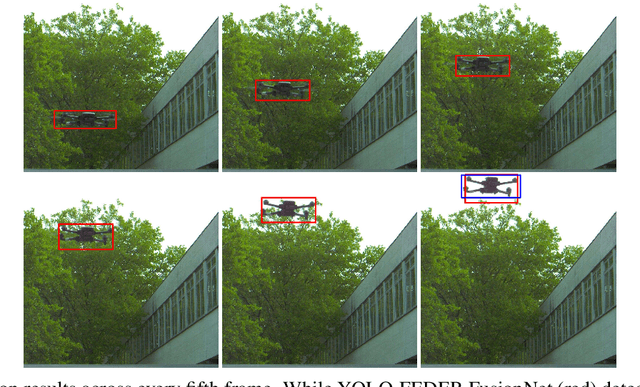



Drone detection in visually complex environments remains challenging due to background clutter, small object scale, and camouflage effects. While generic object detectors like YOLO exhibit strong performance in low-texture scenes, their effectiveness degrades in cluttered environments with low object-background separability. To address these limitations, this work presents an enhanced iteration of YOLO-FEDER FusionNet -- a detection framework that integrates generic object detection with camouflage object detection techniques. Building upon the original architecture, the proposed iteration introduces systematic advancements in training data composition, feature fusion strategies, and backbone design. Specifically, the training process leverages large-scale, photo-realistic synthetic data, complemented by a small set of real-world samples, to enhance robustness under visually complex conditions. The contribution of intermediate multi-scale FEDER features is systematically evaluated, and detection performance is comprehensively benchmarked across multiple YOLO-based backbone configurations. Empirical results indicate that integrating intermediate FEDER features, in combination with backbone upgrades, contributes to notable performance improvements. In the most promising configuration -- YOLO-FEDER FusionNet with a YOLOv8l backbone and FEDER features derived from the DWD module -- these enhancements lead to a FNR reduction of up to 39.1 percentage points and a mAP increase of up to 62.8 percentage points at an IoU threshold of 0.5, compared to the initial baseline.
Modeling the Multivariate Relationship with Contextualized Representations for Effective Human-Object Interaction Detection
Sep 16, 2025Human-Object Interaction (HOI) detection aims to simultaneously localize human-object pairs and recognize their interactions. While recent two-stage approaches have made significant progress, they still face challenges due to incomplete context modeling. In this work, we introduce a Contextualized Representation Learning Network that integrates both affordance-guided reasoning and contextual prompts with visual cues to better capture complex interactions. We enhance the conventional HOI detection framework by expanding it beyond simple human-object pairs to include multivariate relationships involving auxiliary entities like tools. Specifically, we explicitly model the functional role (affordance) of these auxiliary objects through triplet structures <human, tool, object>. This enables our model to identify tool-dependent interactions such as 'filling'. Furthermore, the learnable prompt is enriched with instance categories and subsequently integrated with contextual visual features using an attention mechanism. This process aligns language with image content at both global and regional levels. These contextualized representations equip the model with enriched relational cues for more reliable reasoning over complex, context-dependent interactions. Our proposed method demonstrates superior performance on both the HICO-Det and V-COCO datasets in most scenarios. Codes will be released upon acceptance.
 Add to Chrome
Add to Chrome Add to Firefox
Add to Firefox Add to Edge
Add to Edge